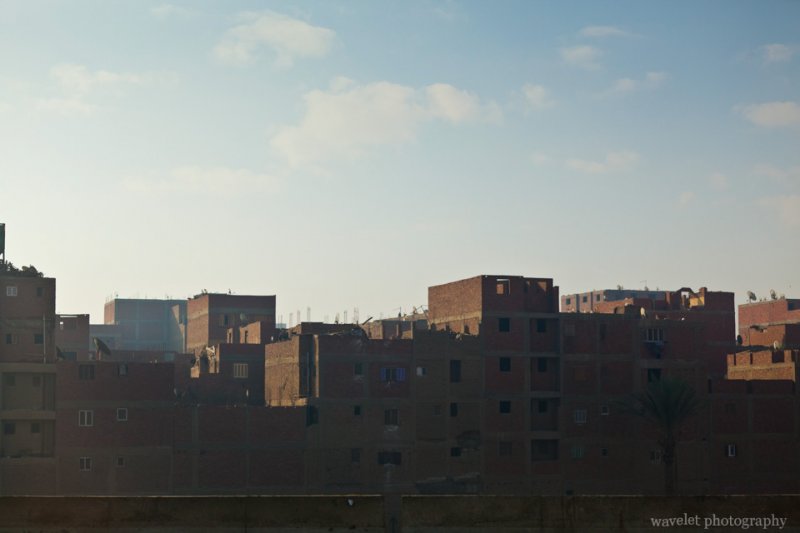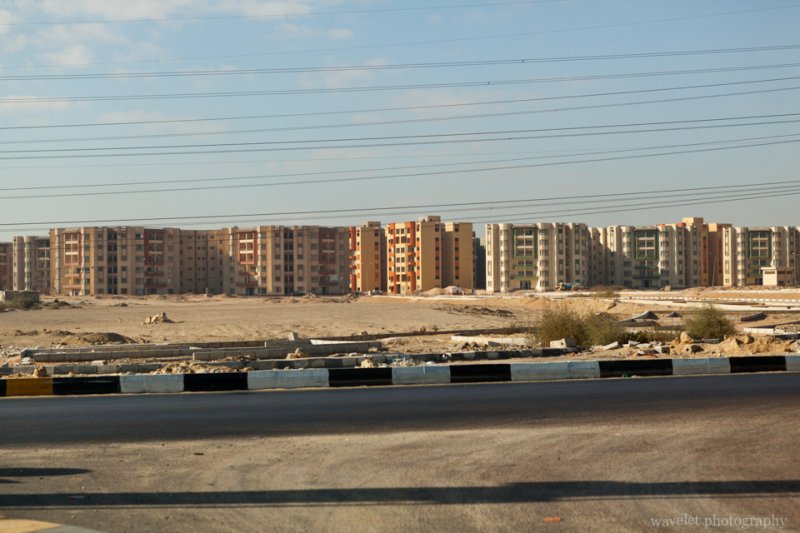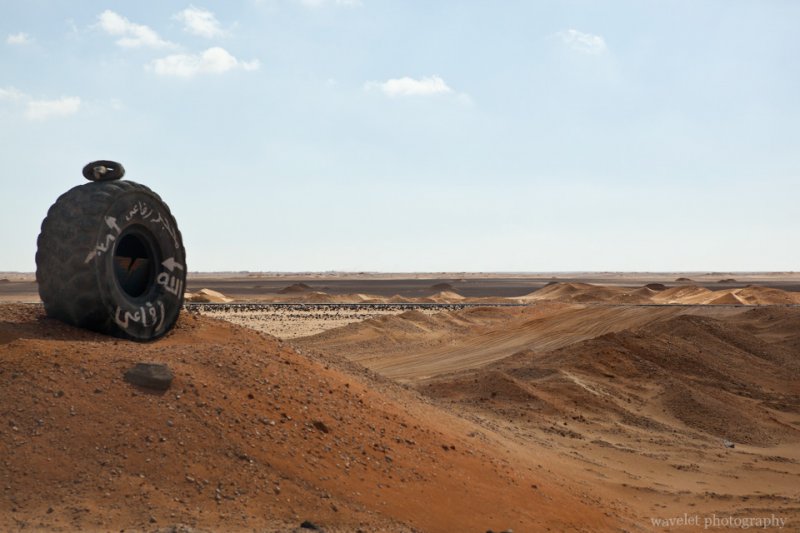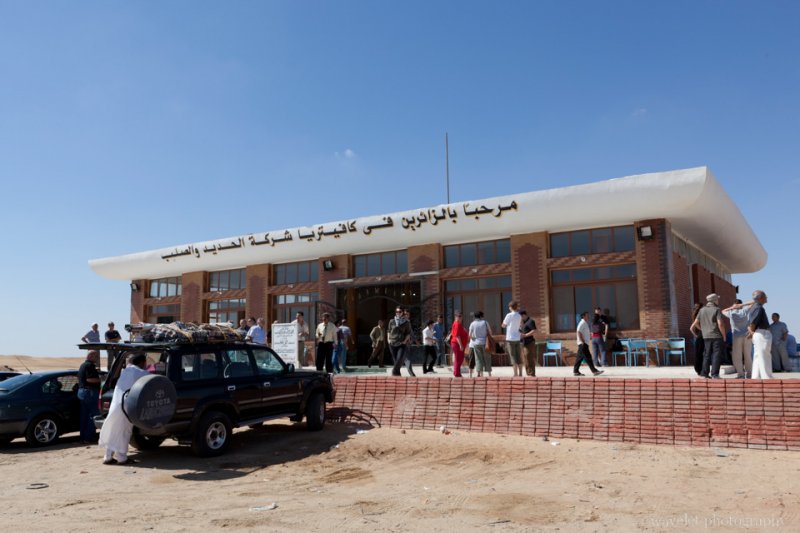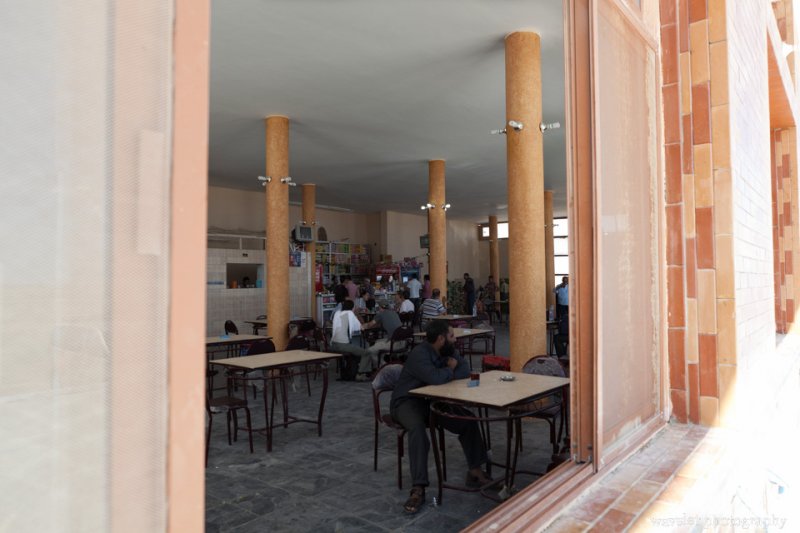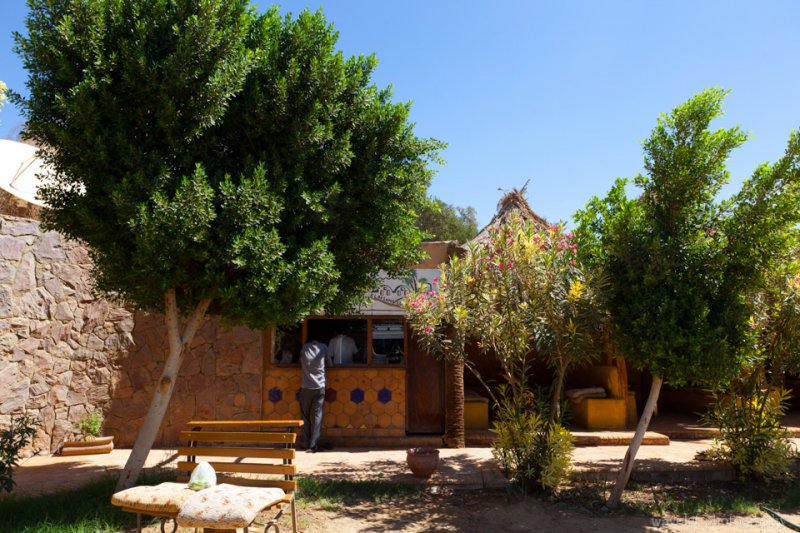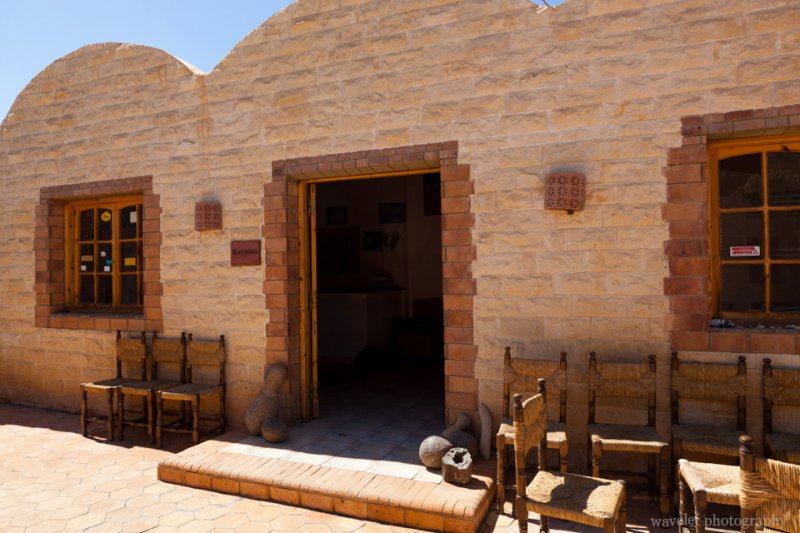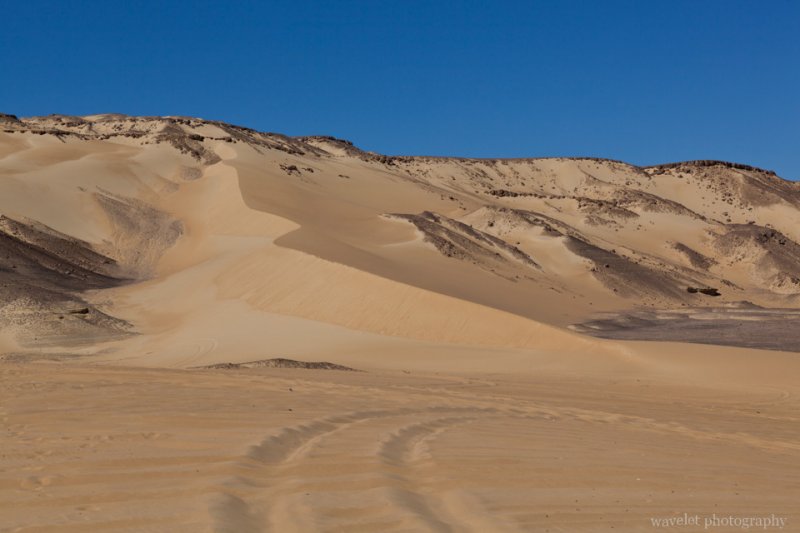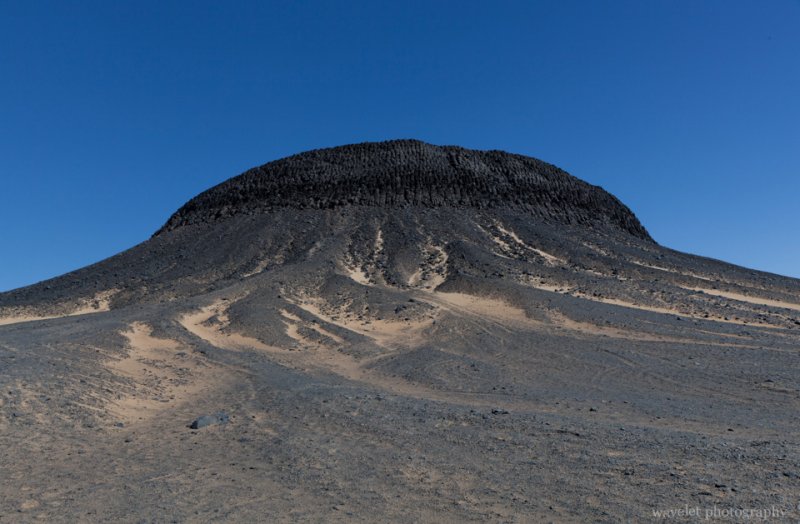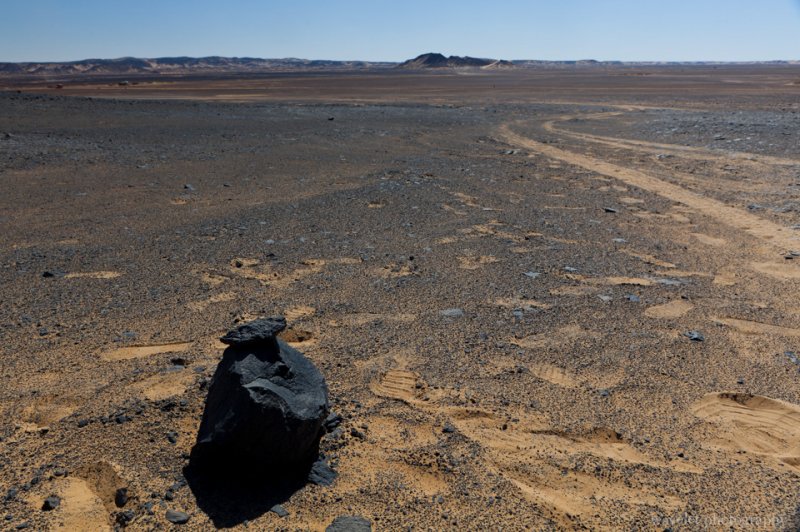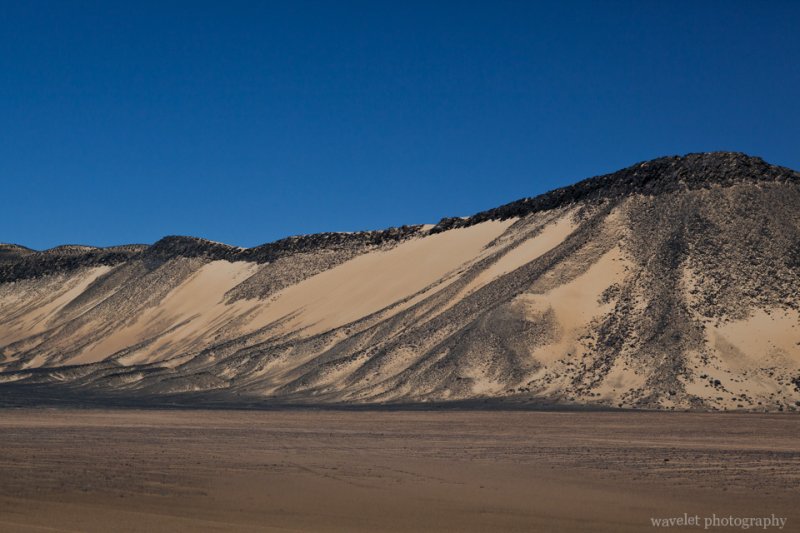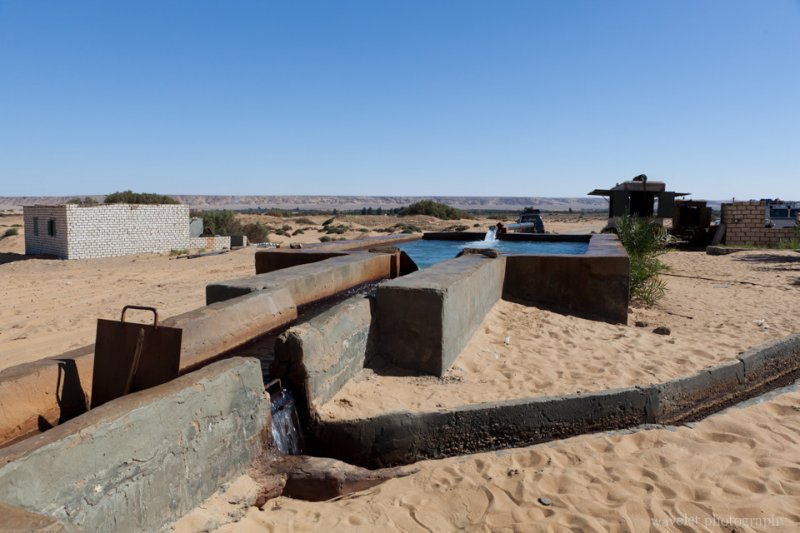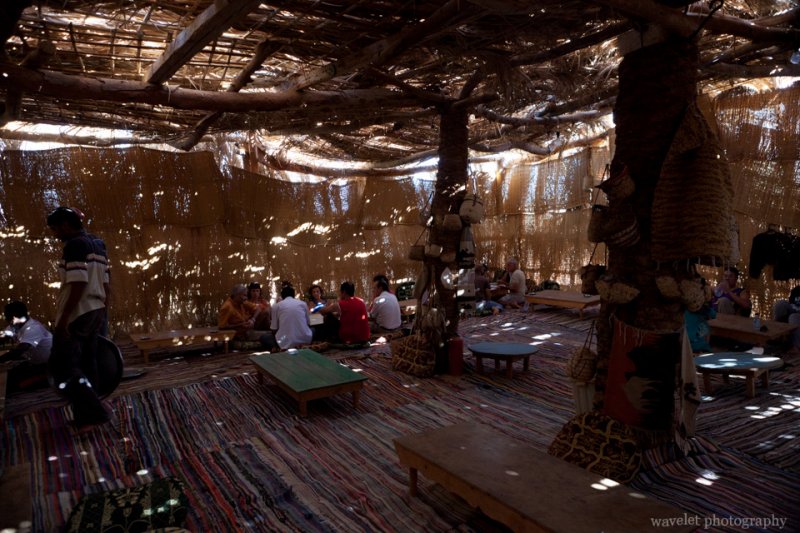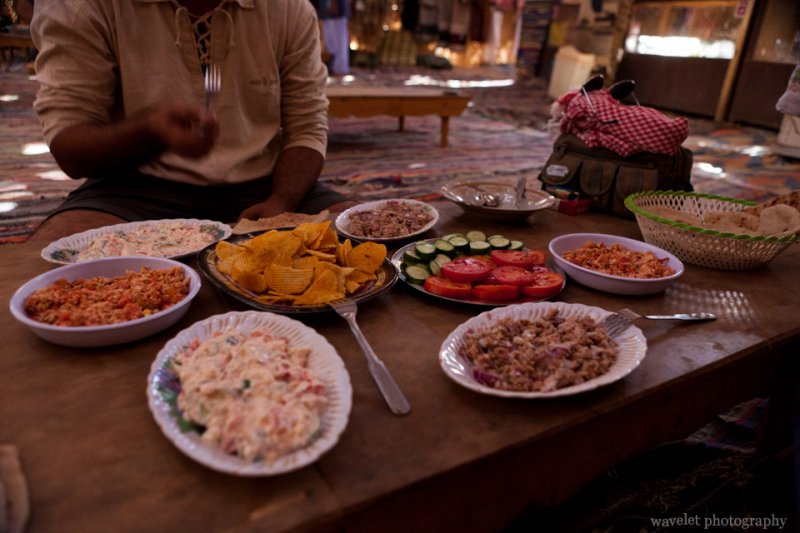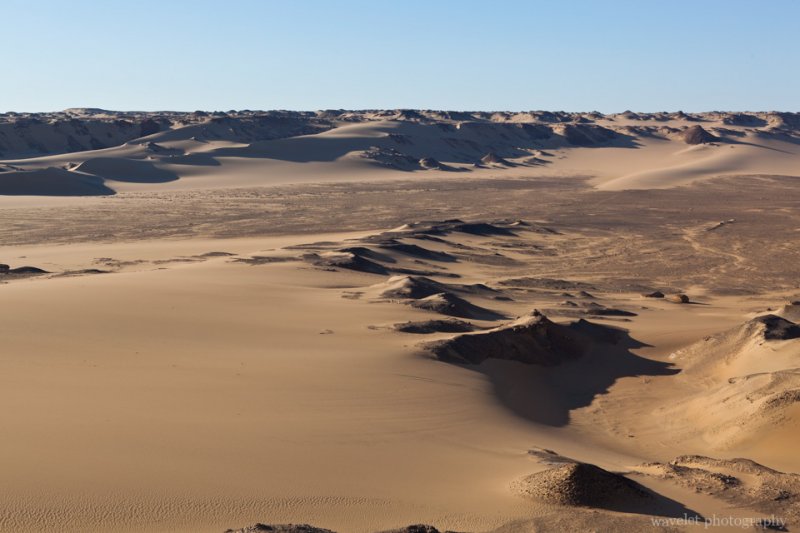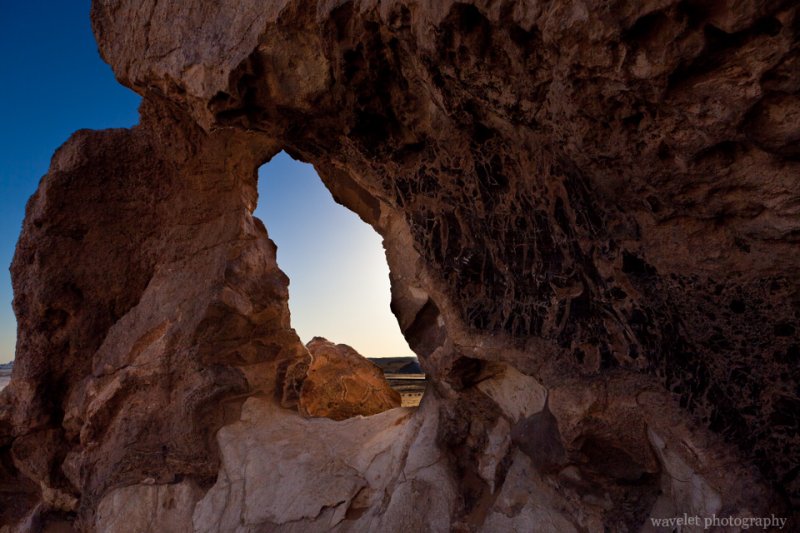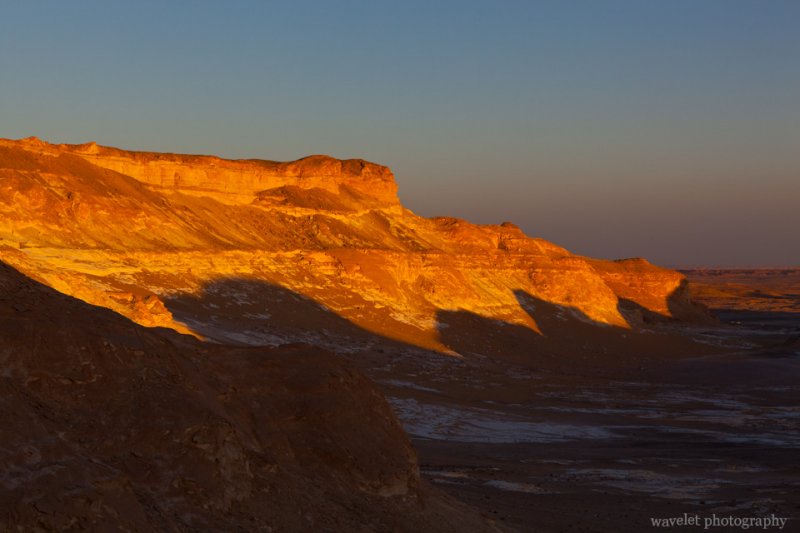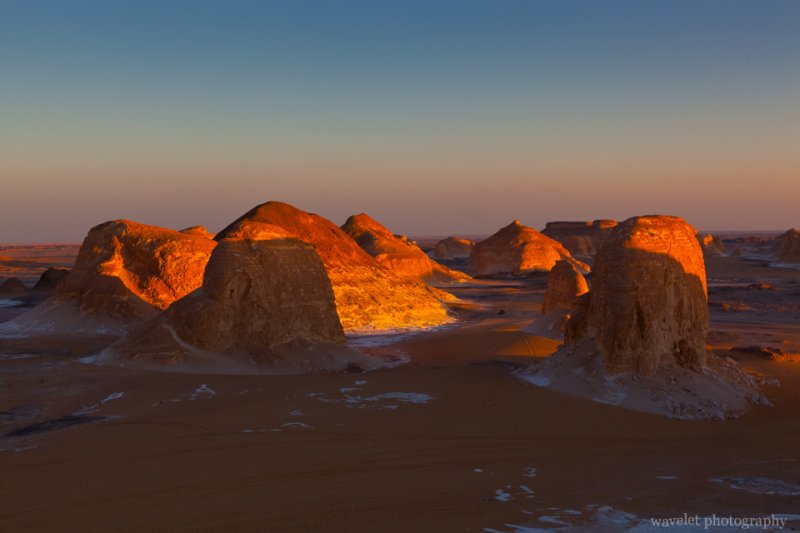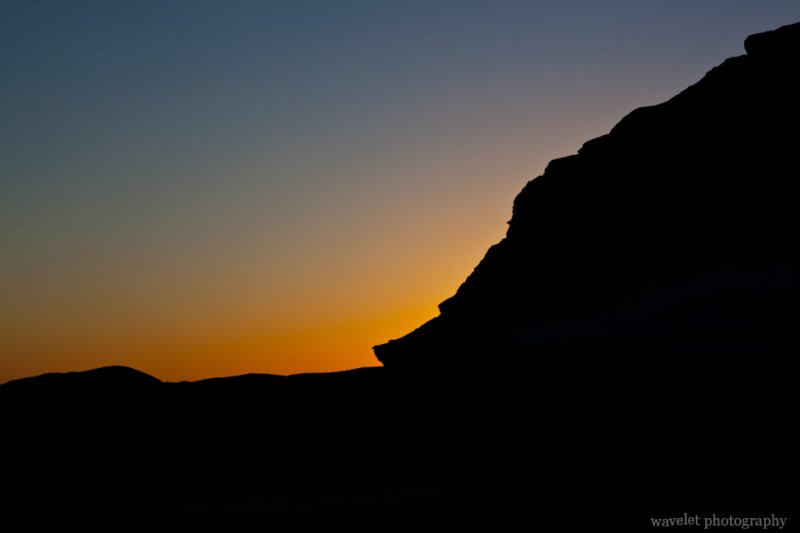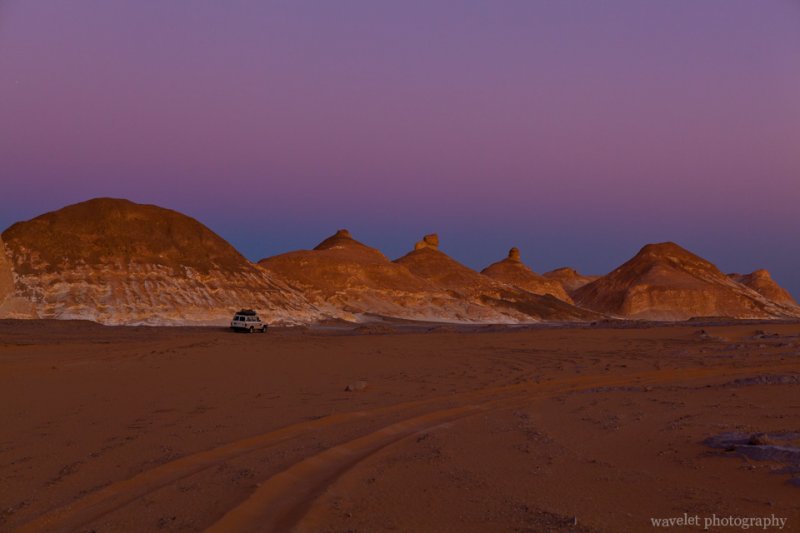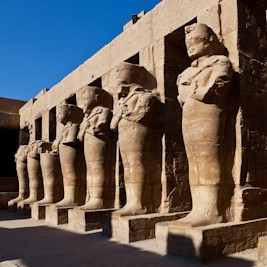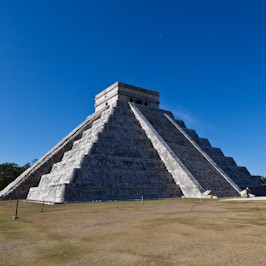2010.10.6When I planed the trip, I struggled on whether we should go to White Desert. We can spend more days in Cairo or Luxor if we don’t take this two-day tour. We finally made the decision to go there because it is relatively less visited by tourists and photo opportunity seems to be excellent. We are glad we made the right choice. It’s certainly one of the highlights of the trip.
Many tour companies provide packages for White Desert tour. We booked the tour with Select Egypt. A minivan picked us up at hotel at 7:30AM. The road out of the city is the same one to Giza. Set the shutter speed to 1/4000s, I could take picture in the car. I was interested in the strange buildings in construction along the highway. Not only they don’t look stable, but the windows are so small.
When we reached Cairo’s suburban area, normal residential buildings started showing up.
For the whole 4-hour drive from Cairo to Bahariya, we were the only passengers on this air-conditioned minivan. After about one hour on the way, we entered the Western Desert. The road condition was very good. From time to time, we saw these huge tires used as road signs.
After two hours, we stopped at the resting area. The store served Egyptian tea and snacks.
We continued on for another 2 hours. After passing several small oases, we finally arrived in Bahariya. The main settlement of Bahariya is a small village. We were dropped at a small hotel and waited to be transfered to a 4×4 jeep to White Desert.
Our jeep arrived at 1PM. Every tour group has one guide and one driver. Our guide has served in peace corps in Sudan. He is young, speaking good English and quite knowledgeable on many things. In fact, he is very modern compared with other Egyptians we met before. On the contrary, our driver is a senior, which means he’s very experienced and familiar with the area.
Before having lunch, we first stopped at a huge sand dune, the black desert area and a spring in the desert. The black desert is quite unique in that the whole area is covered by the small black stones, from the ground to the volcano-shaped hills. Although the area is not totally in black color, the wildness of the vast uninhabitable region did evoke some unearthly feelings.
We had our lunch at a resting area in El Heiz Oasis. The place was built just for serving the organized tour groups. While the outside was dry and hot, grass mat and palm leaves provided the shade that made inside unbelievably cool. The food was ‘lavish’ considering it’s in the middle of the desert. We didn’t have many, especially the fresh tomatoes. We worried about the food safety but I now think we worried too much.
On our way to Farafra direction, we started seeing more sand dunes. This is the east border of the Sahara.
After that, we stopped at a place with crystal formation of stones.
We were in fact behind the schedule, partly because we left Cairo half an hour late, partly because I always took a little more time at every place to for pictures. It turned out to be a good thing. It’s 5PM already and the Sun goes down at 6:30PM. There was no chance we could reach the White Desert before sunset. So we took more time in El Akabat area and observed a wonderful sunset. We hiked down from a sand hill, what presented in front of us was a valley with huge standing boulders. The Sun on the horizon lighted up these boulders and painted them with the amazing golden color. We started seeing the white stone formation on the ground. After the Sun dropped below the horizon, the color of the sky became more subtle. It transited gradually from blue to purple color. It’s much better than the sound and light show at any temple.
We learnt why 4×4 Jeep is critical in this area, the sand is deep and offers very little traction. One car actually got stuck in the sand. Our driver and guide had to perform a rescue session.
